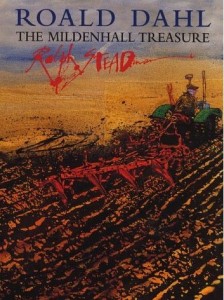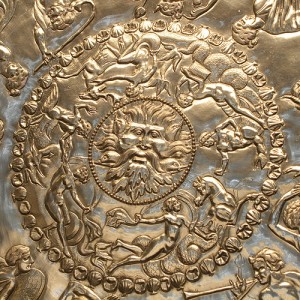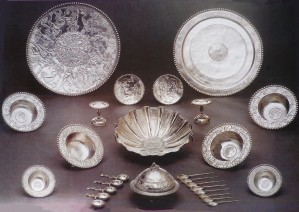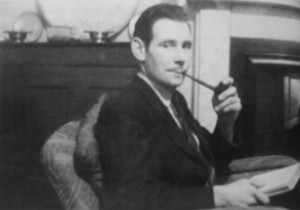Roald Dahl (1997)The Mildenhall Treasure
Rating: 




During the last years of the Roman presence in Britain, in the late third and early fourth centuries, evidence in the form of buried treasures gives a picture of troubled  times. A wealthy family living near Mildenhall in Suffolk, presumably at a time of panic, and intending to retrieve it later, buried a hoard of silver treasure for safety. It could have course already been stolen, and buried with similar intent.
times. A wealthy family living near Mildenhall in Suffolk, presumably at a time of panic, and intending to retrieve it later, buried a hoard of silver treasure for safety. It could have course already been stolen, and buried with similar intent.
Sixteen centuries later, during the Second World War, a ploughman, Gordon Butcher, set his plough four inches deeper than usual. He was on the lookout for coins, for this land had often produced them. He struck some encrusted metal objects which he gave to his employer, Arthur Ford. They returned to the field, retrieving more items.
In 1946, an inquest declared the find to be treasure trove, and their true significance came to light. The Mildenhall treasure is probably the most important collection of Roman works of art ever to be found in Britain. It consists of 34 pieces of highly ornamented silverware, priceless in value, with a total weight of about 25 ½ kilos. When cleaned, the pieces were found to be in an almost perfect state of preservation, made of the finest quality of silver, dating from the fourth century AD to perhaps as early as the first century, which assuming it was part of one collection at the time of burial, represents a collection accumulated over a considerable length of time.
The centrepiece, discovered 25 metres from the remains of a fourth century Roman building, is a magnificent dish, two foot in diameter, and weighing 8 ¼ kilos. A relief shows the head of Oceanus, god of the sea, in the centre, with sea monsters surrounding him. Much of the decoration relates to Bacchus, Pan and female companions, common motifs on silverware of the Roman period. Other pieces of the treasure include a circular niello dish, two convex platters, goblets, a fine bowl with a lid, and eight spoons, five of which are of the kind that may have been used as christening gifts, with the Chi-rho symbol inscribed on the handles, and two with the names Pascentia and Papittedo. Altogether, the hoard forms a curious mixture of pagan and Christian elements. It is thought most of the treasures were either made in Rome or Gaul, but some items, such as the fluted bowl, may have been worked in Britain..
weighing 8 ¼ kilos. A relief shows the head of Oceanus, god of the sea, in the centre, with sea monsters surrounding him. Much of the decoration relates to Bacchus, Pan and female companions, common motifs on silverware of the Roman period. Other pieces of the treasure include a circular niello dish, two convex platters, goblets, a fine bowl with a lid, and eight spoons, five of which are of the kind that may have been used as christening gifts, with the Chi-rho symbol inscribed on the handles, and two with the names Pascentia and Papittedo. Altogether, the hoard forms a curious mixture of pagan and Christian elements. It is thought most of the treasures were either made in Rome or Gaul, but some items, such as the fluted bowl, may have been worked in Britain..
The Greek name Eutherios inscribed on the base of two platters may suggest a date of 360AD, as Flavius Claudius Julianus, cousin of emperor Constantius II, given the title ‘Apostate’ due to his attempts to re-instate paganism, had a senior official of this name. There is no evidence Eutherios was in Britain, but there is a theory the plates may have belonged to one of his officers, a Christian named Lupicinus, who was despatched to Britain from Gaul in 360 AD, to help quell a revolt. He is last heard of on his return to Gaul under arrest. Perhaps a sign of failure?
Roald Dahl wrote an account of the finding of the Mildenhall treasure, re-published in 1999 with illustrations by Ralph Steadman. It forms a good introduction to the story of the find, and illustrates the vagaries of human nature where valuable objects are concerned. Sidney Ford, the man who kept the treasure in his house for four years was a man of few words. I liked Roald Dahl’s account of the official inquest, July 1st 1946. “The Coroner cross-questioned Ford closely. ‘ You thought it was pewter?’ ‘Yes.’ ‘Even after you cleaned it?’ ‘Yes.’ ‘You took no steps to inform any experts of the find?’ ‘No.’ ‘What did you intend to do with the articles?’ ‘Nothing. Just keep them.’”
A man who truly believed in the official phrase: ‘Anything you say may be taken down and used as evidence against you..’
In the photograph, taken during the war years, pieces from the hoard may be seen on the sideboard in the background. Not many of his neighbours could boast of such a fine set of ‘pewter’!
Reference: Treasures of the British Museum (2009) by Marjorie Caygill